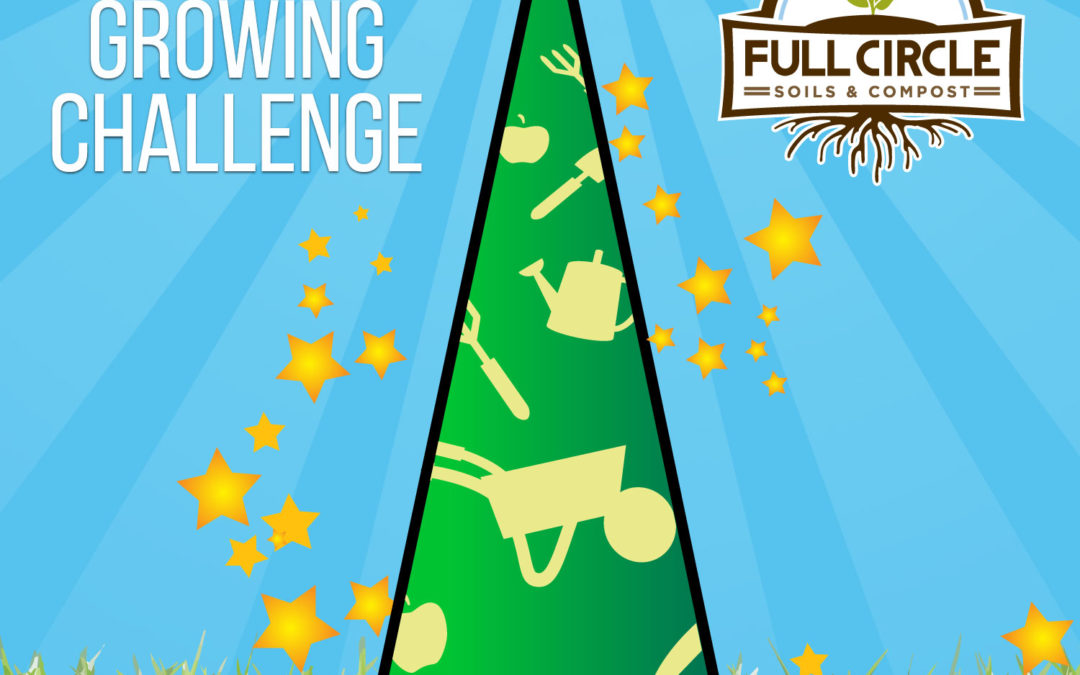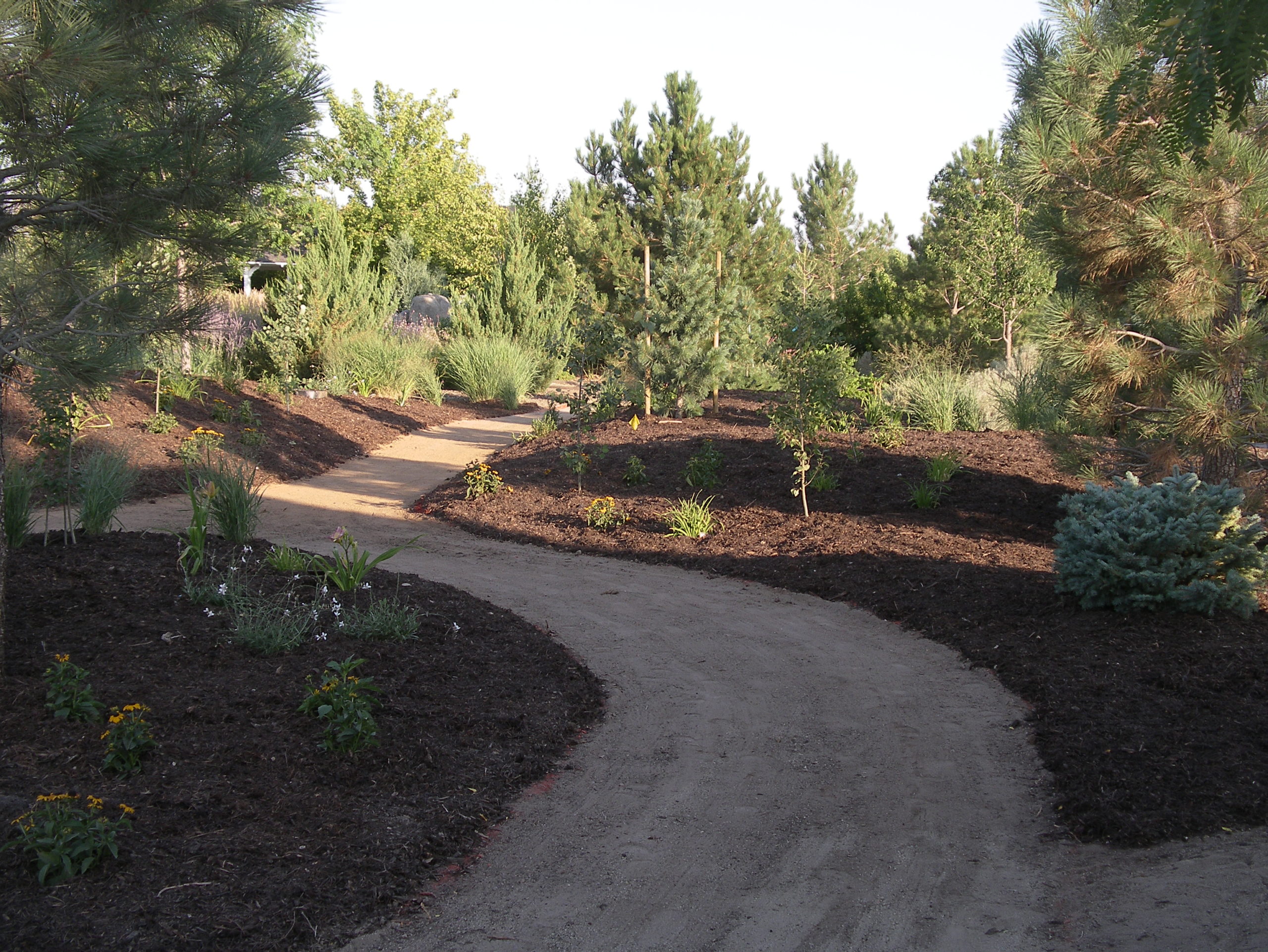Unlock Your Inner Grow-Wizard With Full Circle’s Growing Challenge
Hey, gardeners and growers! Have you completed Level 1 and Level 2 of Full Circle’s Growing Challenge? Way to go! You’re on your way to becoming quite the growing wizard, in fact, the advanced and final level of our challenge is just that–Unlock Your Inner Grow Wizard!
As you’ve been growing your skills (and your plants) throughout levels 1 and 2, you’ve gained quite the gardening and growing knowledge, and now it’s time to put it all to the test while advancing your growing skills to the max with our next set of gardening and growing challenge tips.
Come on, earn your grow-wizard badge with us!
Mulch Your Garden, Around Your Shrubs, In Your Planters
Mulch, it’s something we’ve seen at local gardening stores, we hear landscapers use the term, and we’re all pretty sure we know what mulch looks like, but what does mulch actually do?
In the world of gardening and growing, mulch is simply a layer of material that’s applied over the top of soil. The purpose of mulch is to conserve soil moisture, improve the fertility and health of your soil, reduce weeds growing like crazy,and mulch also does wonders for enhancing the visual appeal of your growing areas.
Mulch can come in all sorts of forms. Generally speaking, mulch is organic material, but that organic material could be so many things! Grass clippings, leaves, hay, straw, bark, sawdust, woodchips, and animal manure can all be considered mulch, as long as it’s used as mulch.
Here at Full Circle, we produce a beautiful, fertile mulch called PROTECT. PROTECT is made from our proprietary humus-based compost and the woody biomass of Lake Tahoe.
You can use Full Circle’s PROTECT Mulch around your garden, trees, shrubs, flowers, and roses. You just have to apply a cozy, 1-inch-deep blanket to your desired areas, it’s that easy! 1 cubic yard of PROTECT will cover 325 square feet of space in your yard.
Save Your Harvested Seeds!
If you’ve grown a lush, thriving garden before, that’s great! But have you ever started your own seeds, harvested that year’s new seeds, and then planted them the following year? It’s part of the full growing process and it’s quite the rewarding one, let us tell you!
The process of gathering seeds to dry and save for next year’s garden isn’t as difficult as one might think, and you can do it with many of the vegetables you already have planted in your garden.
Tomatoes, peppers, beans, and peas are great choices for starting out with your seed saving journey. This group of vegetables are so great for seed-saving beginners because they have self-pollinating flowers, meaning once you collect the seeds from these vegetables, they don’t require much preparation before storing them for the season.
Here is Farmer Craig’s how-to on saving tomato seeds.
Test Your Soil
All soil is not created equal. Over the course of many years, your soil changes along with what you grow in it, what you put in it, how you care for it, and how Mother Nature treats it. Since all soil is different, not all products are perfect for your soil specifically.
Testing your soil can tell you what your soil needs to thrive! At Full Circle Compost, we’re happy to test our fellow northern Nevada growers’ soil and are proud to be one of the only companies on the planet capable and willing to create fully custom blends based on the needs and desires of you, your existing soil and other environmental conditions.
Complementary Growing
Just like us, our plants have friends of their own too! While some plants are friends towards one another others are not-so-friendly, and this is something that plays a big role in the success of your garden.
Companion, or complementary, growing is a great way to maximize your gardening efforts and get the most out of your harvest. Complementary growing can enhance your soil needed for certain vegetables, get rid of pests that are attracted to specific plants, and get you the hands-in-the-dirt knowledge to do your gardening best!
One of our favorite complementary gardening combinations is planting basil near tomatoes and peppers. Basil helps produce greater harvestable produce and repels both flies and mosquitoes when planted next to tomato plants, and when is a friend to peppers too by helping repel aphids, spider mites, mosquitoes, and flies.
Give it a try, gardener, try complementary growing!
Winter Planting
Not all gardens have to start in the spring, in fact, there are many fruits and vegetables that thrive when planted in the cold winter months. Garlic, potatoes, blueberries, and artichokes are plants that are great to start during the winter months and will grow to be harvested later on the next year.
Farmer Craig’s favorite winter planting vegetable is garlic! Garlic is hearty and great to grow in northern Nevada. Here’s a how-to and everything you need to know about planting garlic in Nevada winters.
Are You A Gardening Pro Now?
Feel like you’ve conquered all of our Full Circle Growing Challenges, including this advanced one? We’re thrilled you’re a gardening wizard and would love to see your progress from Level 1 to Level 3! Post your gardening and growing progress to Instagram or Facebook, tag @FullCircleCompost and use the hashtag #FullCircleGrowingChallenge. Happy planting!





